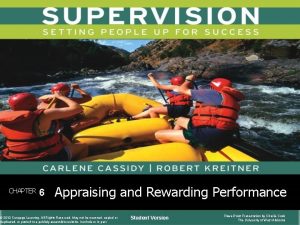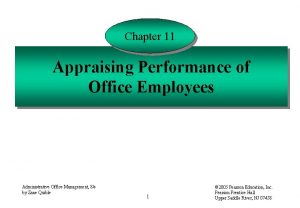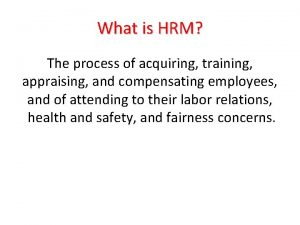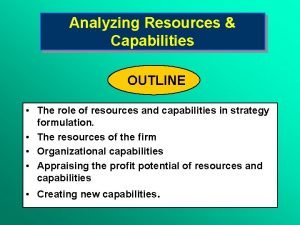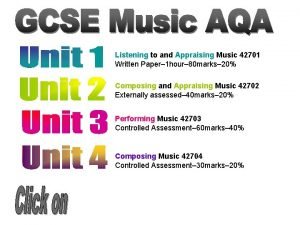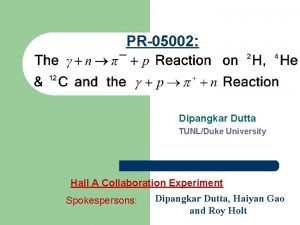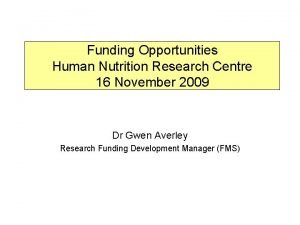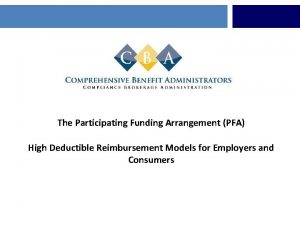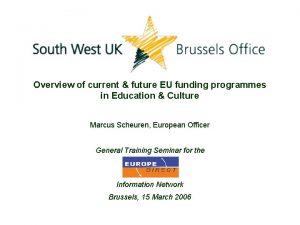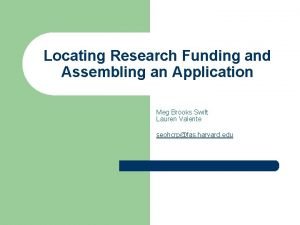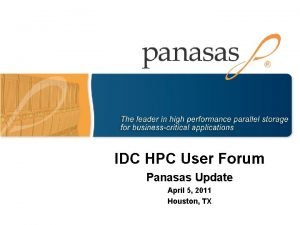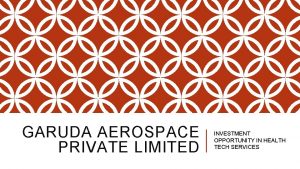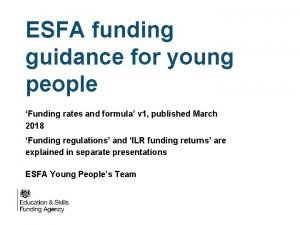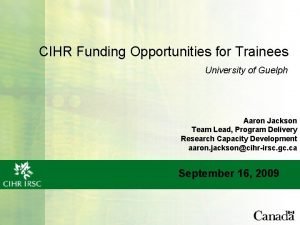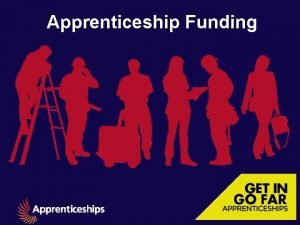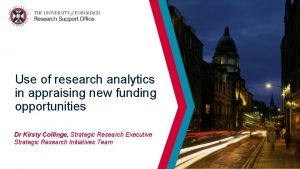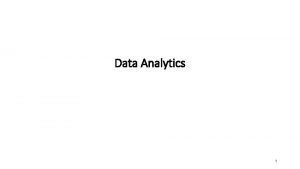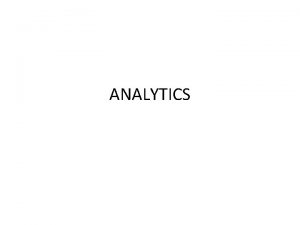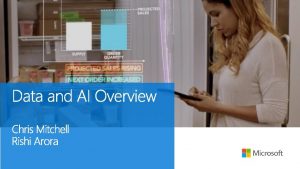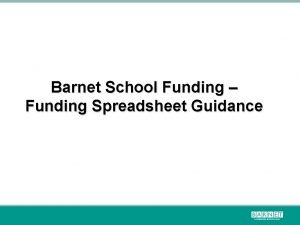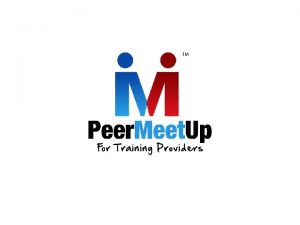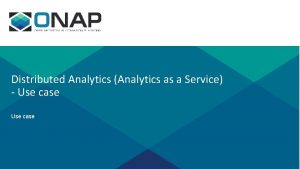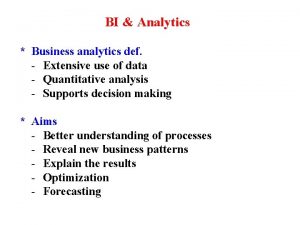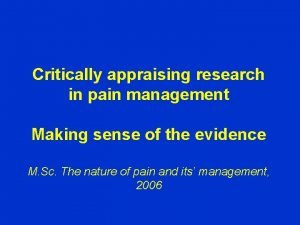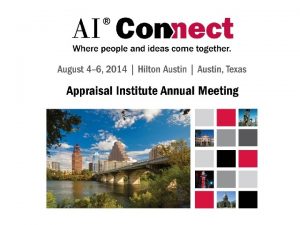Use of research analytics in appraising new funding


















- Slides: 18

Use of research analytics in appraising new funding opportunities Dr Kirsty Collinge, Strategic Research Executive Strategic Research Initiatives Team

UK Funding Environment

Nature & Extent of Interdisciplinary Research

Defining Interdisciplinary Adapted from Zeigler (1990) and Jensenius (2012)

Culture Questions • What is the ethos? • Does the research environment support interdisciplinarity? Approach • Terminology Review – ‘About Us’ & ‘Research’ webpages • 212 organisational units • 5 disciplinary categories

Interdisciplinary Funding Standard approach • Identify applications and awards Value of interdisciplinary awards? ≥ 2 investigators in different disciplines Internal vs. external collaboration? Combined with: - • Funding scheme data • Project summary information Portfolio analysis • Mono / Multi / Interdisciplinary Success rates? Key funders? Academics with interdisciplinary funding?

Interdisciplinary Outputs Standard approach • Identify outputs in journals mapped to ≥ 2 subject category Co-authorship across Uo. E • Identify outputs with authors in differing organisational units • Heat maps • Clusters of activity between disciplines ‘far’ from each other

Interdisciplinary Outputs

Strengthening collaboration with strategic partners

Existing Collaboration Volume & Performance co -authored outputs • • • Collaboration Module No. outputs (<50 authors) FWCI (individual vs. joint) Flux in co-authors Trend in output volume

Existing Collaboration Keyphrase analysis of coauthored outputs • • • 27 major subject areas No. outputs in each area Critical mass >10 outputs Keyphrase analysis Identify key areas

Potential Collaboration Comparing research portfolios • • • Topics of Prominence 27 major subject areas Key topics filter Min. 3% publication share Min. 9 outputs Identify shared topics • Level of co-authorship • Areas of possible synergy

Potential Collaboration Appraising areas of possible synergy Rank/No. Outputs Partner Z Uo. E Partner Z 36 2 45 2. 71 2. 52 Coauthorship 0% 9 18 8 19 2. 08 2. 99 <10% 81. 7 1 19 =4 9 1. 30 1. 27 0% Topic D 95. 9 3 16 =12 10 2. 37 2. 56 <10% Topic E 94. 9 =19 13 1. 56 1. 81 0% Topic A Prominence Percentile 98. 6 10 Topic B 98. 7 Topic C Topic Identifier Uo. E FWCI

Optimising REF 2021

REF 4* Outputs REF 2014 Results • High % outputs world-leading (4*) or int. excellent (3*) = Proxy Indicators of 4* quality REF 2021 • Increase % 4* outputs • Reputation & funding What does a 4* paper look like? • Monitor performance • Selection strategy Chemistry, r = 0. 88, p = 0. 00

Inform Output Selection Article Percentile Journal Percentile A Rhodium-pentane sigma-alkane complex (2016) Top 10% Top 5% Combined experimental and computational investigations of rhodium- and ruthenium-catalyzed C–H functionalization of pyrazoles with alkynes (2014) Top 5% Top 10% 36% Top 5% Top 10% Top 1% Output Title Exceedingly facile Ph-X activation (X=Cl, Br, I) with ruthenium(II) (2015) Experimental and DFT studies explain solvent control of C-H activation and product selectivity in the Rh(III)-catalysed formation of neutral and cationic heterocycles (2015) Solid-state synthesis and characterization of σ-alkane complexes, [Rh(L 2)(η 2, η 2 -C 7 H 12)][BAr. F 4] (L 2 = bidentate chelating phosphine) (2015) Synthesis of Functionalized 1, 4 -Azaborinines by the Cyclization of Di-tertbutyliminoborane and Alkynes (2016) What about “Icosahedral metallacarborane/ Top 1% carborane Top 10%species derived from 1, 1′-bis(ocarborane)” instead? Top 5% Top 1% Article percentile = 7% Journal Percentile = 10%

Performance Monitoring General Engineering Indicator # Outputs A% B publications in top 10% % articles in top 10% C Field-Weighted Citation Impact (FWCI) A Proportion REF 2014 Submitted REF 2021 Nominated 2016 REF 2021 Nominated 2017 621 197 X X 35 39. 3 60. 9 X X 16. 5 17. 2 24. 9 X X 1. 88 2. 06 X X REF 2014 Eligible REF 2021 Eligible (2008 – 2013) (2014 – present) 891 of publications in the in top 10% of the most-cited journals indexed by Scopus B Proportion of publications in in top 10% of the most-cited publications in the world (field normalised) C Number of citations received compared to world average received by all other similar publications (expressed as a ratio)

Thank you! Dr Kirsty Collinge Email: kirsty. collinge@ed. ac. uk Tel: +44 (0)131 650 90 59
 Appraising and rewarding performance
Appraising and rewarding performance Appraising performance of office employees
Appraising performance of office employees Process of acquiring training appraising and compensating
Process of acquiring training appraising and compensating Superfluous strength
Superfluous strength Listening and appraising music
Listening and appraising music Teramond
Teramond Nutrition research funding
Nutrition research funding Participating funding arrangement
Participating funding arrangement Overview funding programmes
Overview funding programmes Harvard hcrp funding
Harvard hcrp funding Panasas funding
Panasas funding Garuda aerospace private limited
Garuda aerospace private limited Funding guidance for young people
Funding guidance for young people Cihr funding opportunities
Cihr funding opportunities Cape funding list
Cape funding list Unit 5 operating your business lesson 1 funding sources
Unit 5 operating your business lesson 1 funding sources Apprenticeship funding bands
Apprenticeship funding bands Unlimited funding
Unlimited funding Ken emond
Ken emond
